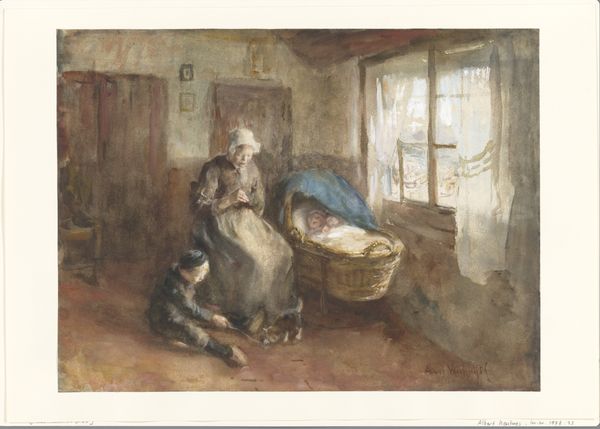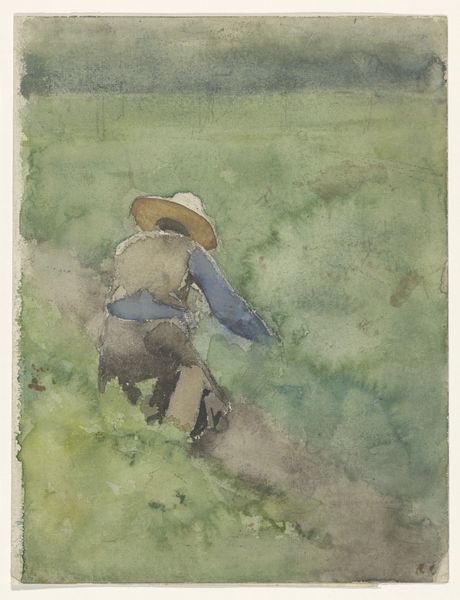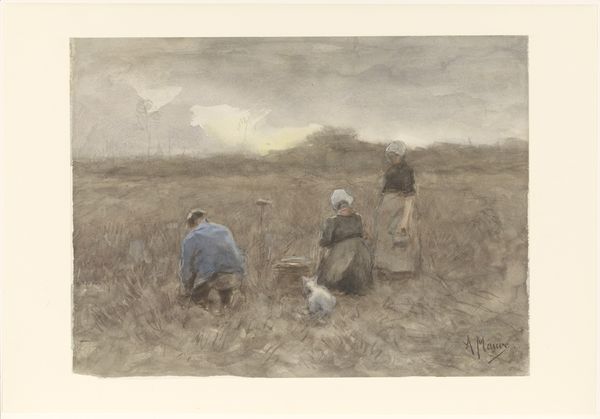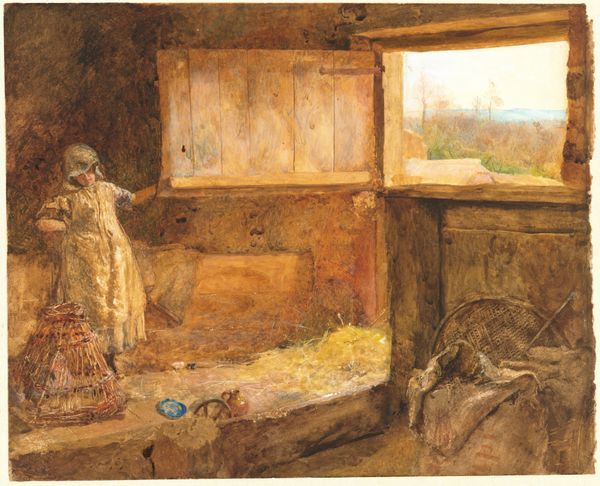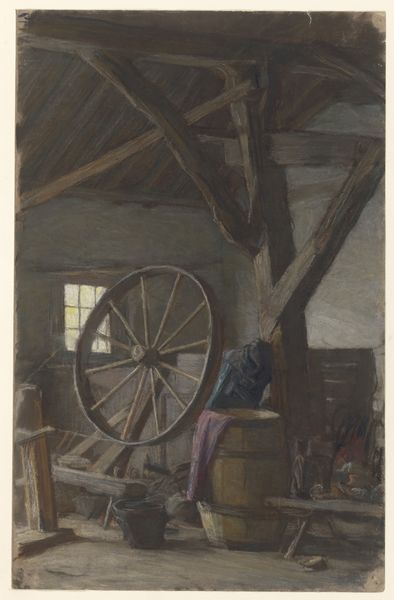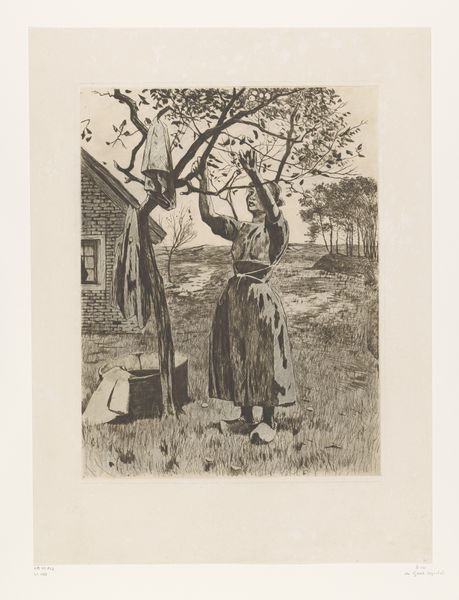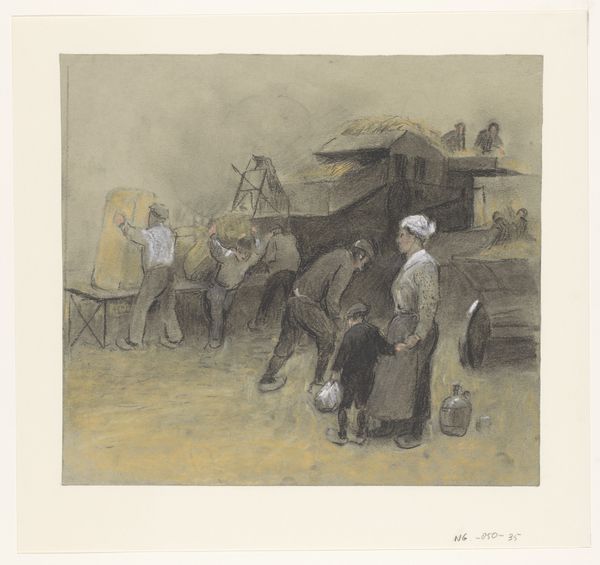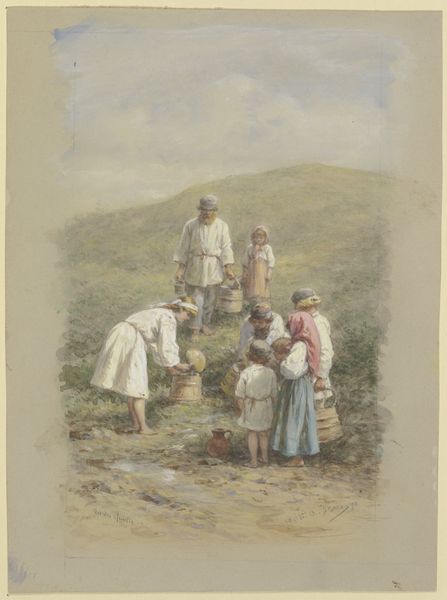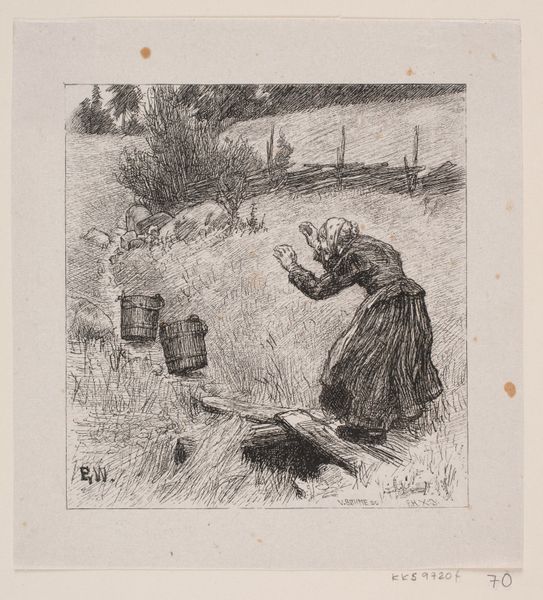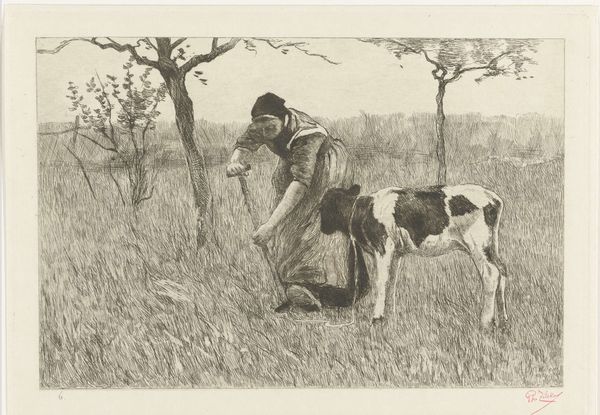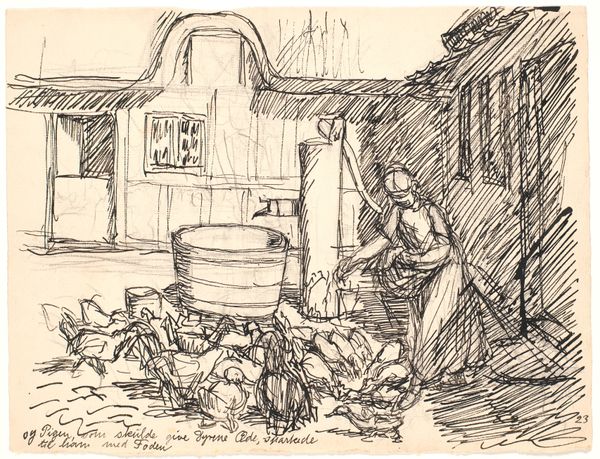
plein-air, watercolor
#
impressionism
#
plein-air
#
landscape
#
figuration
#
watercolor
#
watercolour illustration
#
genre-painting
Dimensions: height 244 mm, width 343 mm
Copyright: Rijks Museum: Open Domain
Curator: Looking at Anton Mauve's "Woman by a Clothesline," likely created between 1848 and 1888 and held here at the Rijksmuseum, what immediately strikes you? Editor: It's a scene of such quiet, almost melancholic domesticity. The soft watercolors create a hazy atmosphere. I can practically smell the damp laundry. Curator: Exactly. Mauve’s process with watercolor creates an intimacy often unseen. There is a definite relationship between labor, materiality, and the art, blurring that division. Notice the repetitive motions suggested, the simple lines drying in an open field. He captured something essential. Editor: It feels important to address the unseen labor embedded in this image. This is about gender, about the repetitive tasks assigned to women, literally airing out their families' linens for all to see. Her bent posture—there's a weariness in it. Curator: Well said! His plein-air technique allowed Mauve to capture these effects masterfully, with attention paid to the material process. Consider the labor involved in transporting materials for the watercolor. Also, Mauve moved easily between the Hague School and impressionism, focusing increasingly on Dutch country life. Editor: I also read the positioning of the home, behind the woman but taking up a large part of the composition, as symbolizing not only safety and sustenance but also her entrapment. Mauve might have been speaking to the experience of women during this era. Curator: It would be interesting to compare Mauve’s watercolor process to painting techniques being adopted by his peers. What differences or nuances of capturing light do you see being addressed? He could also have been aware of and challenging academic art norms. Editor: Indeed. The choice of watercolor feels crucial—it lends itself to this sense of transience. I’m thinking about other artists exploring gendered labor like Millet, yet I agree, this quiet approach evokes different sensations of working in pre-industrial society. Curator: It's a poignant testament to the power of capturing everyday moments. Even now, it stimulates fresh questions regarding form, process, and material impact on society. Editor: Agreed. The muted colors force a closer look, demanding that we consider the complex narratives hidden beneath the image of quiet labor.
Comments
No comments
Be the first to comment and join the conversation on the ultimate creative platform.
